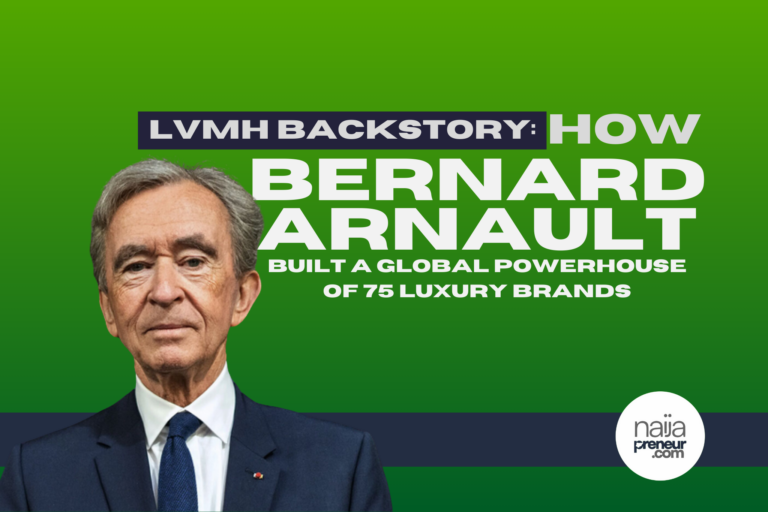In 1984, Bernard Arnault made a decision that many believed was sheer madness. He bought a failing textile company—Boussac. Critics were quick to dismiss him. Who invests in a dying business? It seemed like a risky, even foolish, move.
But Arnault wasn’t crazy. In fact, he had something most people didn’t: a vision. A vision that would not only save the company, but would eventually shape the global luxury market as we know it today.
The State of Luxury in the 1980s
The luxury industry in the 1980s was a chaotic landscape. Most luxury brands were small, family-owned, and lacked any kind of cohesive strategy. It was a disjointed, messy period in the industry’s history, with many of the big names losing their relevance.
But while others saw the luxury market as a sinking ship, Arnault saw an untapped opportunity—one that could be refined, streamlined, and, most importantly, made global.
The Turning Point: Dior and the Power of Branding
Arnault’s first major step was acquiring Boussac, a move that brought the iconic fashion house, Dior, under his control. But instead of keeping the status quo, Arnault took bold action. He slashed the company’s underperforming divisions and focused on what truly mattered: Branding, Craftsmanship, and Exclusivity. These values would become the foundation of his future empire.
With Dior at the core of his vision, Arnault knew that luxury wasn’t just about great products—it was about making people feel that those products were special, rare, and aspirational. He wasn’t just selling high-end items; he was selling a lifestyle, a symbol of success that was meant to transcend borders.
A Giant Leap: LVMH is Born
But Arnault wasn’t satisfied with just Dior. In 1987, he took things to an entirely new level. He merged several iconic luxury brands into one entity: LVMH. The new conglomerate included heavyweights like:
- Louis Vuitton – a storied brand in the world of luxury leather goods
- Moët & Chandon – synonymous with champagne and celebration
- Hennessy – the reigning giant in the cognac world
Each of these brands had deep-rooted heritage and untapped potential, but they lacked a unified strategy. Arnault’s mission was simple: Build the world’s first luxury conglomerate.
The Playbook: Strategy and Execution
Arnault’s playbook was straightforward, but executing it was far from easy. Here’s how he did it:
- Acquisition – Arnault didn’t just buy brands; he bought history. He scoured the luxury market for established names with a rich legacy and untapped potential. Brands like Givenchy and Fendi were added to the LVMH portfolio, expanding its reach and influence.
- Exclusivity – Arnault understood that luxury thrives on scarcity. There would be no discounts, no cutting corners. Every product, every experience had to feel exclusive, something few people could attain. This sense of exclusivity would create desire, and ultimately, demand.
- Global Reach – Arnault saw the potential for luxury brands to go beyond their European roots. He focused on capturing new markets in the U.S. and Asia, which would become essential growth drivers for LVMH.
But perhaps the hardest challenge was scaling the luxury business without losing its identity. Arnault struck a delicate balance. Each brand under the LVMH umbrella remained independent, preserving its creative DNA, while LVMH provided the financial muscle and operational support that allowed them to flourish on a global scale.
The Results: A Global Luxury Empire
The results were nothing short of game-changing. Under Arnault’s leadership:
- Louis Vuitton reinvented itself as the ultimate travel brand, with high-profile collaborations that turned heads worldwide.
- Hennessy solidified its dominance in the cognac market, particularly in the growing Chinese market.
- Moët & Chandon became synonymous with celebration, turning champagne into a universal symbol of luxury and success.
Why did it work? Arnault understood that authenticity and heritage mattered. He respected the brands’ histories, while also pushing them forward. By making luxury feel exclusive and unattainable, he created a sense of desire that drove demand.
But perhaps the most important factor? Arnault had a long-term vision. Instead of focusing on short-term profits, he reinvested in innovation, global expansion, and further acquisitions. His approach wasn’t just about creating wealth—it was about creating a sustainable, globally dominant empire.
Today: A $400 Billion Empire
Fast forward to today, and LVMH is worth over $400 billion, with 75 brands under its umbrella, spanning industries from wine and fashion to hotels and art. It has become the largest luxury conglomerate in the world, dominating every corner of the luxury market.
This isn’t just a business story; it’s a masterclass in vision, execution, and the belief that the impossible is possible.
Key Takeaways: Lessons from Bernard Arnault
What can we learn from Arnault’s extraordinary journey?
- Spot opportunities in failures – While others saw a dying industry, Arnault saw potential.
- Reinvent without losing your roots – Reinvention doesn’t mean abandoning what made the brand great; it means building on its legacy.
- Scale with vision, purpose, and a long-term strategy – Building something sustainable takes time and strategic planning.
- Create desire, not just products – Luxury isn’t just about the product; it’s about creating a sense of exclusivity that people crave.
The Bigger Picture
Wealth isn’t built overnight. Arnault’s story is a testament to the power of spotting opportunities others miss and building something so compelling that people can’t help but want to be part of it.
Now, the question is: How will you start building your empire?


